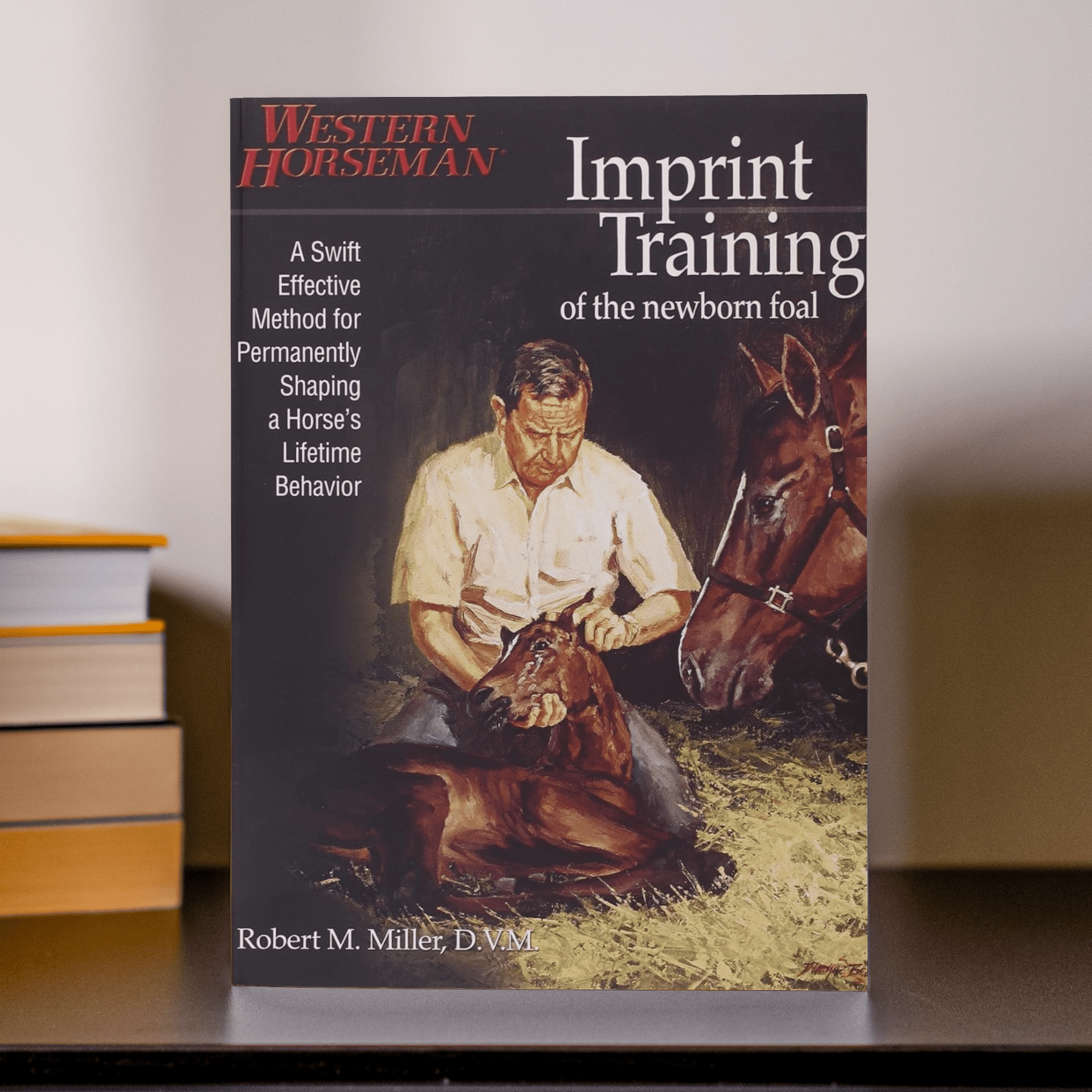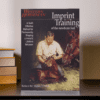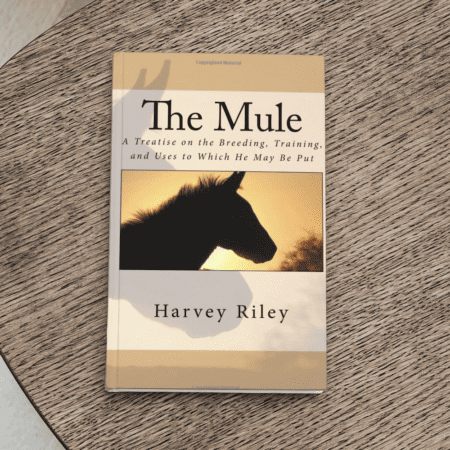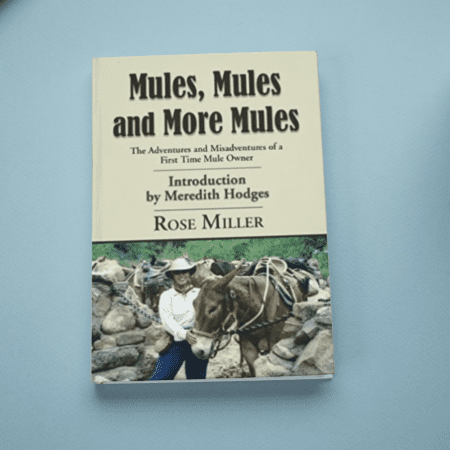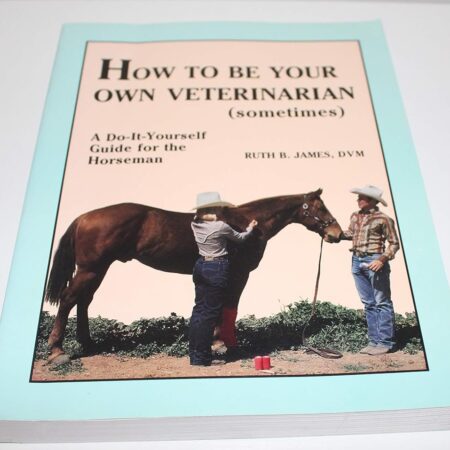Imprint Training of the Newborn Foal
IMPRINT TRAINING OF THE NEWBORN FOAL offers an easy-to-follow, step-by-step approach to handling and training newborn foals, as well as numerous techniques and exercises that aid the foal in halter training and later in performing riding maneuvers. Imprinting can be defined as a learning process occurring soon after birth in which a behavior pattern is established. The newborn foal is imprinted to follow and bond with whatever large object looms above it at the time of birth.
Dr. Miller’s methods lay the foundation for teaching a horse most of what it will need to know to serve as a useful animal for the rest of its life. Early training can, in an amazingly brief period of time, assure an ideal relationship between horse and human, with the horse bonded and submissive to the human. In addition, the horse will be desensitized to the everyday frightening stimuli that typically elicit a flight reaction in the young horse, and which account for the frequent injuries that afflict horses and the people who work with them.
The book includes nineteen chapters beginning with initial imprinting training, then following with subsequent sessions, halter training, performance basics, response reinforcement, problem prevention, and sections on racehorses, mules, and brood mares.
“Probably one of the most exciting and beneficial breakthroughs in equine psychology and training in the last decade has been the procedure the author calls “imprint training,” the behavior-shaping learning process that occurs immediately after a foal’s birth. Renowned veterinarian, clinician and lecturer Dr. Robert M. Miller researched, developed and presented these techniques to a world full of horsemen and – women eager to bond with their horses, understand them better and help them to live more comfortably and willingly in a world full of humans.”
“Dr. Miller, like most of us, was taught the conventional wisdom that excessive handling of newborn foals would result in spoiled foals and the risk of rejection by the mare. However, in over 30 years of veterinary practice, he found just the opposite. Foals he was forced to handle because of obstetrical emergencies turned out to be gentle and unafraid of him later on, and they recognized him. Horses, like deer, cattle, sheep and certain fowl, are a “precocial” species and are imprinted by what they see moving around them after they’re born.”
“Dr. Miller experimented with his own foals, maximizing their handling at the time of birth to imprint them. He added desensitizing procedures and later conditioned responses to create “imprint training,” a technique that¿s now in use all over the world, with all breeds and other precocial species, as well.”
“This book contains Dr. Miller’s theories and techniques, including step-by-step procedures involving bonding, habituation and sensitization. He discusses how to properly handle the mare before, during and after imprinting. There are subsequent sessions detailing how to tie and halter-break the foal, and the added bonus of teaching performance basics that ultimately aid in under-saddle training. Dr. Miller also addresses problems and their prevention, plus the handling of special cases, such as race horses and mules.”
IMPRINT TRAINING OF THE NEWBORN FOAL offers an easy-to-follow, step-by-step approach to handling and training newborn foals, as well as numerous techniques and exercises that aid the foal in halter training and later in performing riding maneuvers. Imprinting can be defined as a learning process occurring soon after birth in which a behavior pattern is established. The newborn foal is imprinted to follow and bond with whatever large object looms above it at the time of birth.
Dr. Miller’s methods lay the foundation for teaching a horse most of what it will need to know to serve as a useful animal for the rest of its life. Early training can, in an amazingly brief period of time, assure an ideal relationship between horse and human, with the horse bonded and submissive to the human. In addition, the horse will be desensitized to the everyday frightening stimuli that typically elicit a flight reaction in the young horse, and which account for the frequent injuries that afflict horses and the people who work with them.
The book includes nineteen chapters beginning with initial imprinting training, then following with subsequent sessions, halter training, performance basics, response reinforcement, problem prevention, and sections on racehorses, mules, and brood mares.


